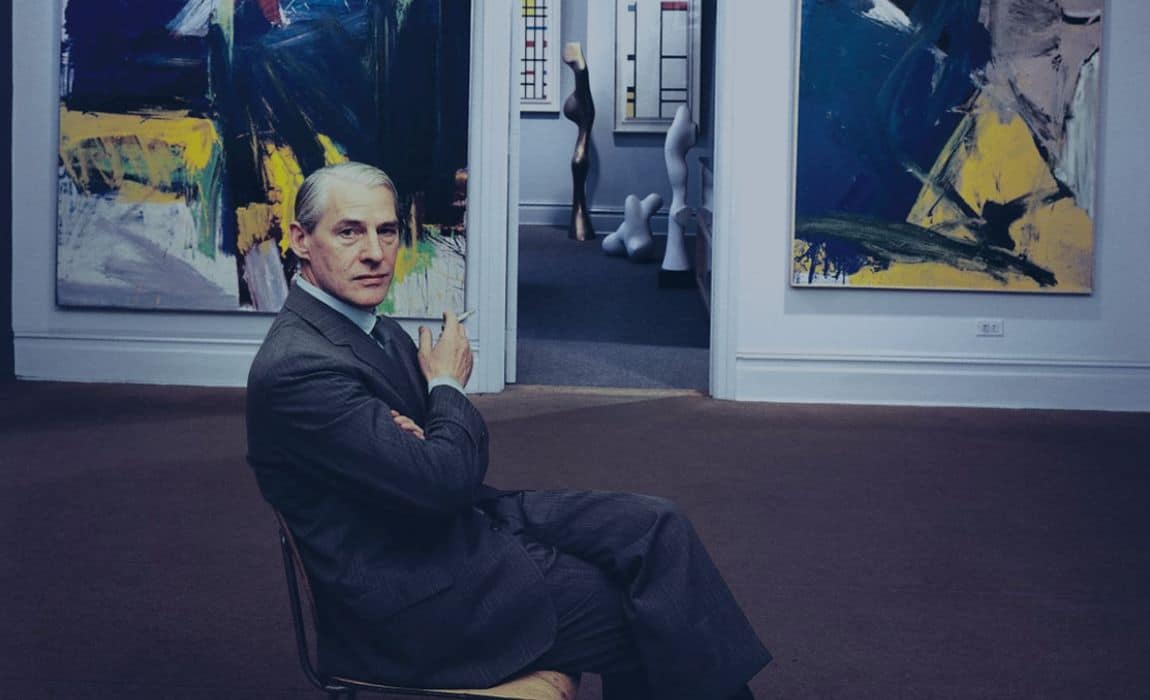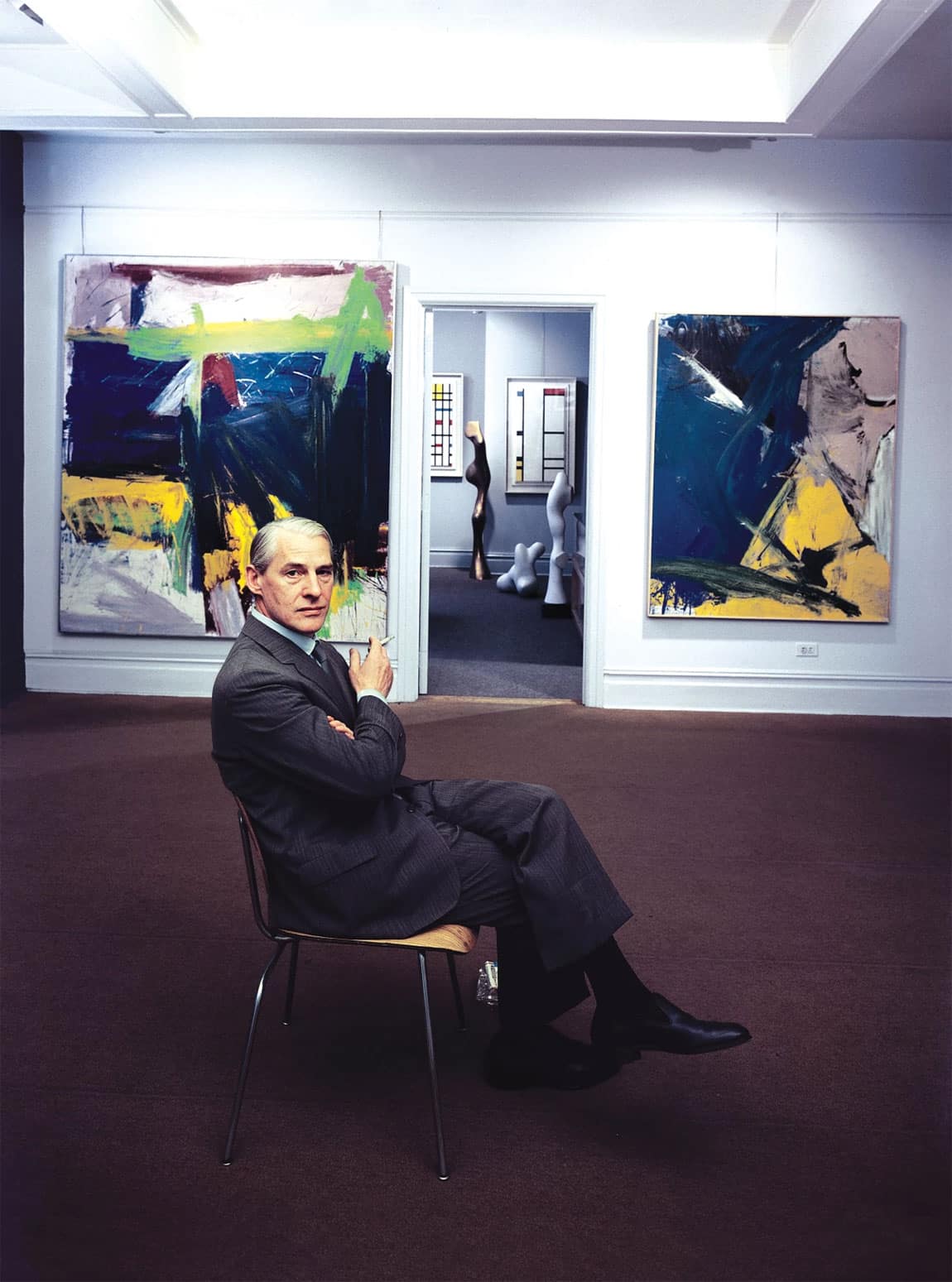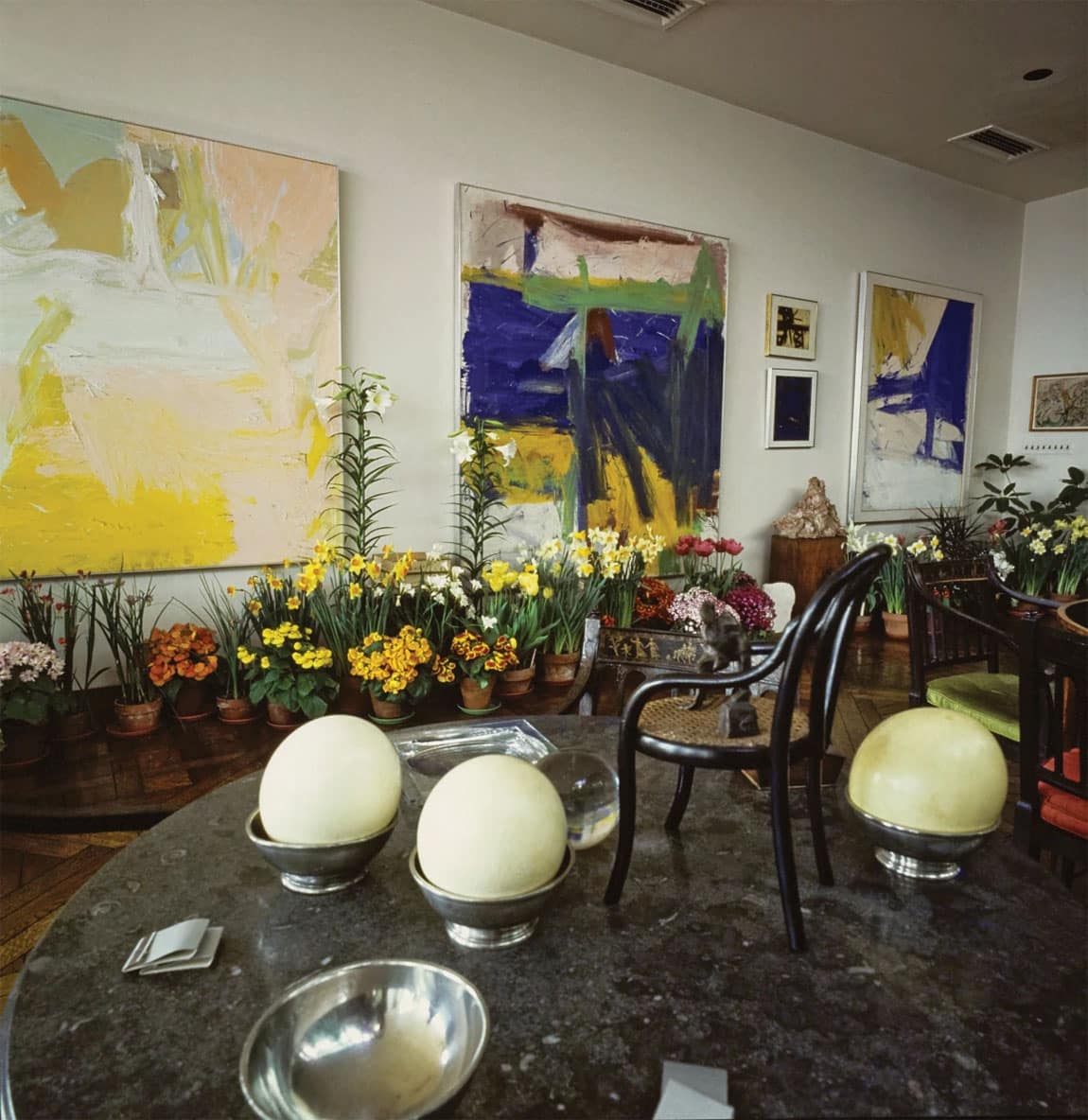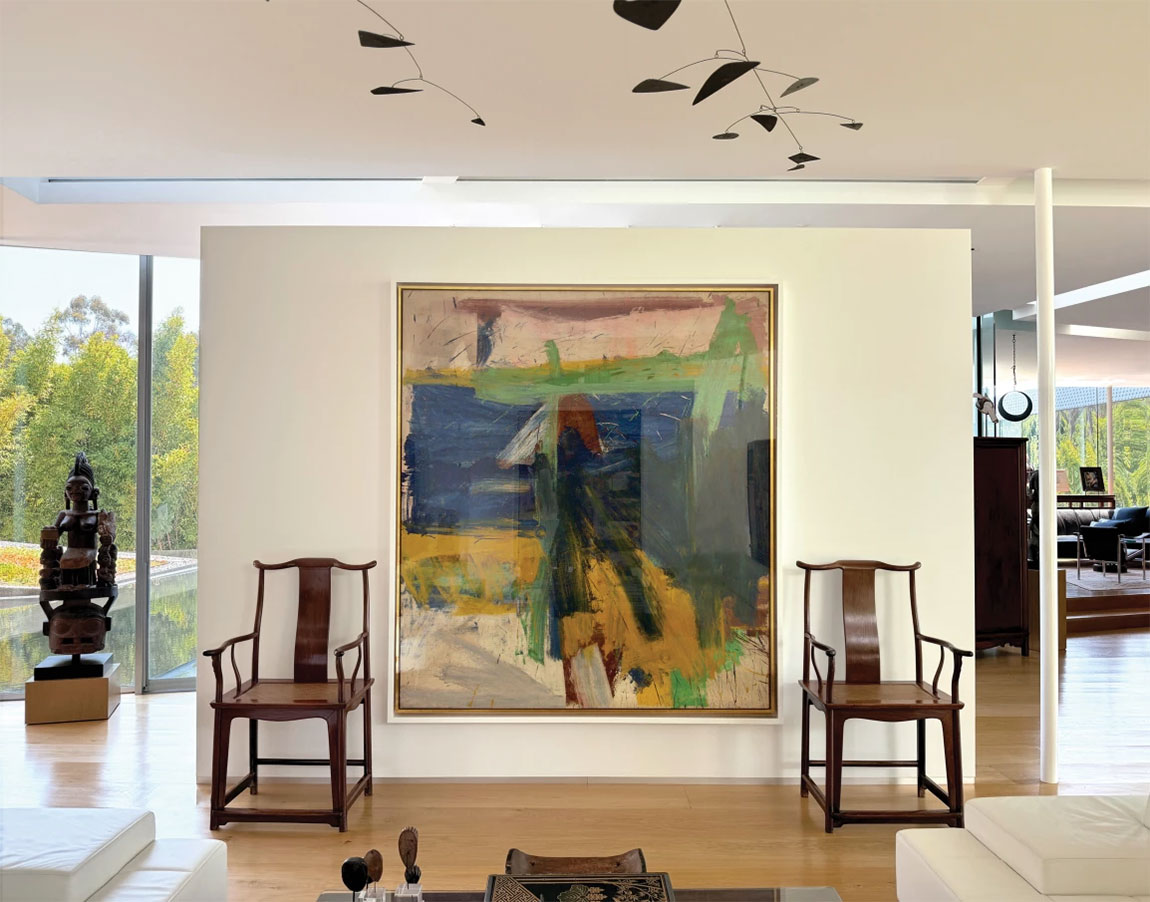 Following the artist’s 1957 painting “Ruth’s Zowie” through the different homes it has lived in.
Following the artist’s 1957 painting “Ruth’s Zowie” through the different homes it has lived in.
One afternoon in 1957, artist Ruth Kligman arrived at Willem de Kooning’s New York studio, where a new blue-and-yellow painting hung on a main wall. Upon seeing the striking work, she reacted with a single word: “Zowie!”
At the time, Kligman was de Kooning’s newest love interest. The affair, which began the same year de Kooning separated from his wife, Elaine, caused quite a stir in New York social circles. Just the previous year, Kligman had been in a tumultuous relationship with another stalwart of the Abstract Expressionist movement, Jackson Pollock. She was the sole survivor of the tragic 1956 car crash that took the lives of Pollock and their friend Edith Metzger.
De Kooning, clearly struck by Kligman’s response, named the canvas “Ruth’s Zowie.” The painting was unveiled to the public on May 4, 1959, as part of a solo de Kooning outing at the Sidney Janis Gallery in New York. The show was a triumph—a much-needed boost for the Dutch American artist, who had divided the art world six years prior with his controversial “Woman” paintings, which some condemned as grotesque and degrading toward women.

The first owner of “Ruth’s Zowie” was the art critic and magazine editor Thomas Hess. An early advocate of de Kooning’s work, Hess wrote often and admiringly about his paintings, solidifying the artist’s role as a leader of the postwar American scene.
“Ruth’s Zowie” occupied a prized place in Hess’s New York home, where he lived with his wife, Audrey Stern. It hung in the living room, flanked by two other important de Koonings: “Pastorale,” from 1963, and “Souvenir de Toulouse,” from 1958. Hess embraced a maximalist and eclectic approach to his interiors—the room was overrun with flowers, tended to by Stern; oddities such as ostrich eggs displayed in silver cups; and sculptures gathered from his travels around the world. The space opened directly onto their garden with views of the East River.

After Hess’s death, “Ruth’s Zowie” was auctioned at Sotheby’s in 1985, where it sold for $1.54 million. The anonymous buyer took the painting to Chicago, where it remained for a decade before traveling to the West Coast, where it now resides with its current owner, Creative Artists Agency cofounder Michael Ovitz.
Ovitz acquired the de Kooning in 1997, adding it to his already expansive collection of Abstract Expressionist masterpieces, which includes works by Mark Rothko and Franz Kline, among others.
The collector shares his vast, museum-like Los Angeles residence with his partner, fashion entrepreneur Tamara Mellon. Designed by architect Michael Maltzan, the home offers a completely different atmosphere for “Ruth’s Zowie” to exist in, far from the living room-turned-conservatory of Hess’s Manhattan abode. The de Kooning is no longer surrounded by its sister paintings and instead has ample room to breathe. On either side, Ovitz has placed a single Ming Dynasty chair. (He has a keen eye for Chinese antiquities.) A mobile by American sculptor Alexander Calder hovers above.

POSTED WITH PERMISSION. COPYRIGHT SOTHEBY’S. Click to read original article.

